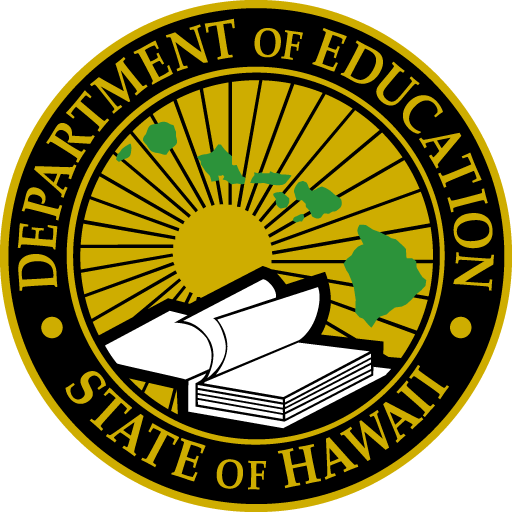E ola pono. E mālama i nā piko.
Live pono. Nurture thriving connections.
虽然健康教育的主要重点是培养健康技能,但这些技能必须结合优先风险主题中的功能信息来处理。基于标准的健康教育必须适合年龄和发育,在医学上准确,并在所有优先风险主题中提供事实信息:
- 心理和情绪健康
- 健康饮食和身体活动
- 个人健康与保健
- 安全(预防意外伤害)
- 预防暴力
- 预防吸烟
- 预防酒精和其他药物的使用
- 性健康和责任
注:学前健康教育与 夏威夷早期学习和发展标准 (HELDS).
课程要求
- 所有小学年级都必须接受健康教育。
- 中学/初中学校必须提供课程,使所有学生都符合夏威夷 6-8 年级的健康教育标准和绩效指标。强烈建议但不要求每个中学/初中年级都参加一个学期(0.5 个学分;60 小时)的健康教育。
- 在高中,需要修读一个学期(0.5 个学分;60 小时)的健康教育课程才能毕业。
- 中学阶段提供各种健康专门选修课程(例如同伴教育)。
- 有关初中升学和高中毕业的要求,请参阅 董事会政策 105-1 学术计划 (PDF), 董事会政策 102-9 中等教育促进政策 (PDF), 和 董事会政策 102-15 高中毕业要求和毕业典礼 (PDF).
健康教育健康指南
全面的健康教育为学生建立健康的关系和做出终身健康决定提供了教学基础。 健康指南 支持以夏威夷为基础的优质健康教育。
健康教育的健康指南围绕以下方面进行组织: 三个关键组件 涉及教学时间,包括营养教育,并强调文化相关和以“āina”为基础的方法:
- 健康教育课程的教学内容重点关注支持健康饮食的知识和技能,并与 HIDOE 健康教育标准保持一致。
- 小学学生每周接受健康教育时间不少于45分钟,中学学生每周接受健康教育时间不少于200分钟。
- 营养教育包括以文化为基础、亲自动手的文化相关活动,例如食物准备、品尝、参观农场和学校花园。
性健康教育
Comprehensive sexual health education helps students understand and navigate their development and growth as they progress from childhood through puberty and adolescence. Effective, comprehensive sexual health education provides students with the age-appropriate, medically accurate content and skills to know and be able to communicate for healthy relationships, access resources and support, and make healthy decisions.
一些州的法律和政策通过全面的性健康教育帮助防止青少年怀孕和性传播感染的传播。
- 国家法律 (Hawaiʻi Revised Statutes (HRS) §321-11.1) 为任何国家资助的性健康教育项目制定了要求。
- 董事会政策 103-5 性健康教育 (PDF) 要求该部门实施全面的性健康教育。
- 学校所采用的课程描述应提供给家长/法定监护人,并应在任何教学开始之前发布在学校网站上。
- 只有在学生父母或法定监护人事先书面请求的情况下,学生才可以免于参加性健康指导。
- 如果学生的父母或法定监护人提出书面请求,学生可能不会受到纪律处分、学术处罚或其他制裁。
Parents or legal guardians can also opt-out of having their children participate in instruction related to controversial issues.
父母或法定监护人可以写信给学校管理人员或老师,要求将孩子排除在特定课程或活动之外。如果收到这样的信件,必须为学生提供替代的学习活动。父母或法定监护人有义务在课程或活动开始前通知学校管理人员或老师。
Recommended instructional materials:
- FLASH (PDF)
- Get Real (PDF)
- HealthSmart (PDF)
- Pono Choices (PDF)
- Positive Prevention PLUS (PDF)
- Reducing the Risk with the Supplement (PDF)
- Rights, Respect, Responsibility (PDF)
Learn more about HIDOE 中的性健康教育 (PDF)
Sexual Violence Prevention Education
Teaching students about sexual violence prevention is essential for nurturing safe and caring schools and communities. It equips students with information and skills that promote healthy relationships and respect for others. It also helps students understand how to seek support if they or someone they know experiences sexual violence.
Prevention-oriented and developmentally-appropriate sexual violence prevention instruction to students addresses:
- bodily autonomy (e.g., body awareness and safety, consent, boundaries),
- recognizing and reporting sexual abuse, and
- accessible resources (e.g., trusted adults, community resources).
Department schools will be responsible for providing a description of the curriculum on their public-facing websites. Before the start of instruction to students, schools will notify parents and legal guardians about the upcoming instruction, how to preview the school’s materials, and the opt-out process.
A student shall be excused from sexual violence prevention instruction only upon the prior written request of the student’s parent or legal guardian. A student may not be subject to disciplinary action, academic penalty, or other sanctions if the student’s parent or legal guardian makes a written request.
Approved instructional materials:
- Elevatus Training Curriculum: Sexuality Education for People with Developmental Disabilities, Adapted for People with High Support Learning Needs (PDF)
- Fight Child Abuse (PDF)
- HealthSmart (PDF)
- Mad Hatter Wellness Curricula (PDF)
- NetSmartz (PDF)
- Positive Prevention PLUS, Special Populations (PDF)
- Rights, Respect, Responsibility (PDF)
- Second Step Child Protection Unit (PDF)
- The Sex Abuse Treatment Center’s Sexual Abuse Prevention Curricula (PDF)
Learn more about Sexual Violence Prevention in HIDOE.
general health education Resources
- 健康教育为何如此重要(Google 文档)
- 健康教育标准和主题概述(Google 文档)
- 学习健康设计
- 健康教育印刷品(Google Drive)
- 健康指南
- 你很重要!健康资源
- 在健康教育中使用学校花园
- 审查健康教育教学材料 (PDF)
- 2022 年夏威夷学校健康概况 - 重点报告 (PDF)
美国农业部非歧视声明
根据联邦民权法和美国农业部 (USDA) 民权法规和政策,本机构禁止基于种族、肤色、国籍、性别(包括性别认同和性取向)、残疾、年龄或对先前民权活动的报复或报复而进行歧视。
计划信息可能以英语以外的其他语言提供。需要其他沟通方式(例如盲文、大字印刷品、录音带、美国手语)获取计划信息的残障人士应联系负责管理该计划的州或地方机构或美国农业部的 TARGET 中心,电话 (202) 720-2600(语音和 TTY),或通过联邦中继服务 (800) 877-8339 联系美国农业部。
要提出项目歧视投诉,投诉人应填写表格 AD-3027(美国农业部项目歧视投诉表),该表格可从以下网址在线获取: https://www.usda.gov/sites/default/files/documents/USDA-OASCR%20P-Complaint-Form-0508-0002-508-11-28-17Fax2Mail.pdf,可从任何 USDA 办公室拨打 (866) 632-9992 或写信给 USDA。信中必须包含投诉人的姓名、地址、电话号码以及对涉嫌歧视行为的书面描述,且描述应足够详细,以便向民权事务助理部长 (ASCR) 告知涉嫌侵犯民权的性质和日期。填妥的 AD-3027 表格或信函必须通过以下方式提交给 USDA:
- 邮件:
美国农业部
民权事务助理部长办公室
西南独立大道 1400 号
华盛顿特区 20250-9410;或 - 传真:
(833)256-1665 或 (202)690-7442;或 - 电子邮件:
[email protected]
该机构是一个平等机会提供者。

